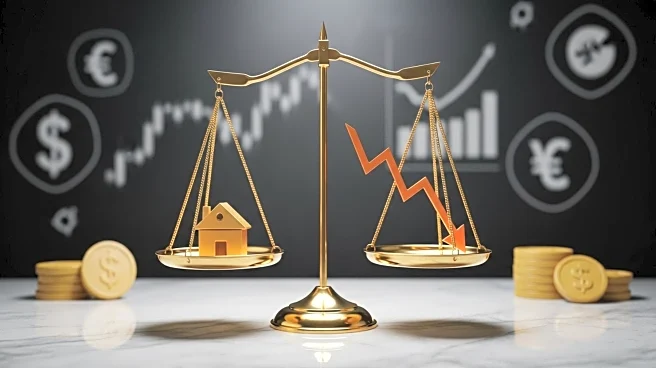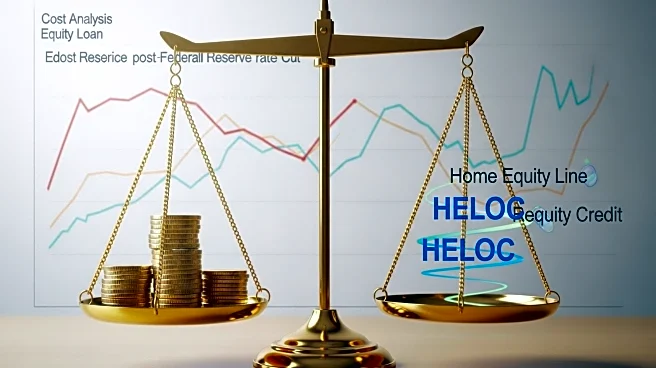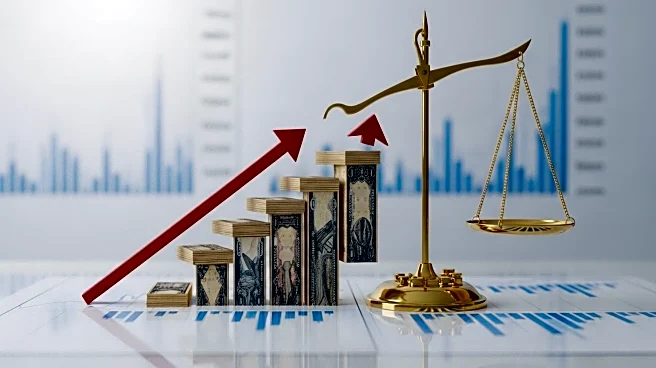What is the story about?
What's Happening?
The Federal Reserve has implemented several interest rate cuts, leading to a reduction in borrowing costs for various financial products. As of September 2025, the average rate for a Home Equity Line of Credit (HELOC) is 8.05%, making it one of the most affordable borrowing options compared to home equity loans at 8.28% and personal loans at 12.39%. These rate cuts are part of a broader trend aimed at easing the financial burden on borrowers, following a period of high inflation and interest rates. The cuts have resulted in a full percentage point reduction over recent months, with additional cuts anticipated in October and December.
Why It's Important?
The reduction in interest rates is significant for homeowners and borrowers seeking cost-effective financing solutions. HELOCs, which use home equity as collateral, offer a revolving line of credit that is substantially cheaper than credit card rates, which are nearing a record high of 23%. This shift in borrowing costs can provide financial relief to consumers, allowing them to manage debt more effectively and potentially stimulate economic activity by increasing consumer spending. The fixed interest rates of home equity loans also offer stability, making them an attractive option for those who prefer predictable repayment schedules.
What's Next?
With the Federal Reserve's ongoing rate cuts, borrowers can expect further reductions in borrowing costs, particularly for HELOCs, which have variable interest rates. This could lead to increased demand for these financial products as consumers seek to capitalize on lower rates. Financial institutions may respond by offering competitive rates and terms to attract borrowers. Additionally, homeowners might consider refinancing existing loans to take advantage of the favorable rate environment, potentially leading to a surge in refinancing activity.
Beyond the Headlines
The trend of decreasing interest rates may have broader implications for the housing market and consumer confidence. Lower borrowing costs could encourage more home purchases and renovations, boosting the real estate sector. Additionally, as consumers find it easier to manage debt, there may be a positive impact on overall economic growth. However, the reliance on home equity as collateral underscores the importance of responsible borrowing practices to avoid potential financial pitfalls.
AI Generated Content
Do you find this article useful?













